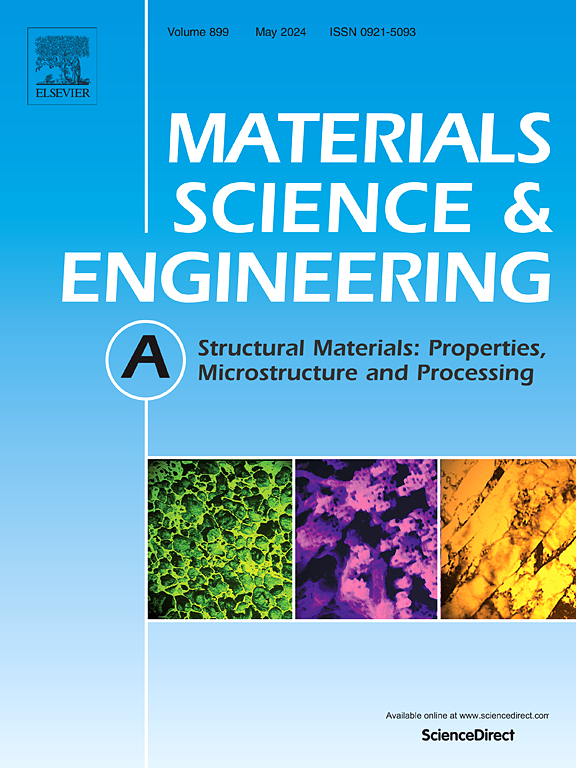具有卓越强度-延性组合的全球三维梯度结构钢板
IF 6.1
2区 材料科学
Q1 MATERIALS SCIENCE, MULTIDISCIPLINARY
引用次数: 0
摘要
全球梯度结构(GGS)从岩心到表面加工的扭转已被报道具有特殊的强度-延性组合。然而,由于其较低的轴对称性,很难将这种技术应用于片(板)样品。在这里,我们报告了一种新型的3D-GGS,它是在304不锈钢(304ss)板上使用循环扭转生产的。由于异质结构效应更明显,3D-GGS 304ss板材比GGS 304ss棒具有更好的强度-延性组合。拉伸试验过程中,激活了一种独特的相变诱导塑性(TRIP)效应,即先激活反向马氏体相变(α′→γ),经过一定应变后再转变为正向马氏体相变(γ→α′)。反向和正向TRIP效应都有助于提高延性。此外,3d结构还产生了异质变形诱导(HDI)加工硬化以保持延展性。这项工作开发了一种实用的方法来构建3D-GGS,以提高金属板和组件的综合性能,而不改变其几何形状。本文章由计算机程序翻译,如有差异,请以英文原文为准。
Global 3D-gradient-structured steel sheets with superior strength-ductility combination
Global gradient structures (GGS) from core to surface processed by twisting have been reported to possess exceptional strength-ductility combinations. However, it is hard to apply this technique to sheet (plate) samples because of their lower axial symmetry. Here, we report a novel 3D-GGS produced in a 304 stainless steel (304ss) sheet using cyclic twisting. The 3D-GGS 304ss sheets exhibited much better strength-ductility combinations than GGS 304ss rods due to their more pronounced heterostructural effects. During the tensile testing, a unique transformation-induced plasticity (TRIP) effect was activated in which reverse martensitic transformation (α′ → γ) was first activated, then transited to forward martensitic transformation (γ → α′) after some strain. Both the reverse and forward TRIP effects contributed to higher ductility. In addition, the 3D-structures also produced hetero-deformation induced (HDI) work hardening to retain ductility. This work developed a practical approach to constructing 3D-GGS to enhance integrated performances of metal sheets and components without changing their geometries.
求助全文
通过发布文献求助,成功后即可免费获取论文全文。
去求助
来源期刊

Materials Science and Engineering: A
工程技术-材料科学:综合
CiteScore
11.50
自引率
15.60%
发文量
1811
审稿时长
31 days
期刊介绍:
Materials Science and Engineering A provides an international medium for the publication of theoretical and experimental studies related to the load-bearing capacity of materials as influenced by their basic properties, processing history, microstructure and operating environment. Appropriate submissions to Materials Science and Engineering A should include scientific and/or engineering factors which affect the microstructure - strength relationships of materials and report the changes to mechanical behavior.
 求助内容:
求助内容: 应助结果提醒方式:
应助结果提醒方式:


